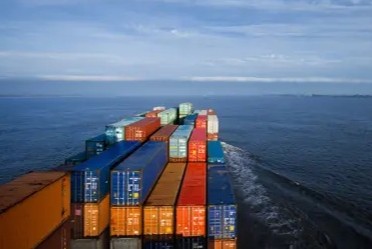 Moving towards the ‘-30 by 30’ emission reduction target through smarter logistics
Moving towards the ‘-30 by 30’ emission reduction target through smarter logistics
UPM Pulp continues to make progress in reducing CO₂ emissions across its logistics network. With a focus on logistics optimisation, fuel transitions and strategic partnerships, UPM Pulp is making steady progress toward achieving 30% emissions reduction by 2030.In 2022 UPM launched the ‘-30 by 30’ Programme with the aim of reducing CO2 emissions related to purchased materials and logistics (Scope 3*) by 30%. As part of the programme suppliers are required to provide data on the carbon footprint of the goods and services they sell to UPM. This includes accounting for all relevant emissions from the supplier's upstream supply chain and operations.
“We have already made solid progress reaching roughly a third of our target, and our work continues steadily towards the 30% goal,” says Mirja Liljeqvist, Development Manager of UPM’s Pulp Logistics.
Efficiency through partnerships
Effective emission cuts require strong collaboration across the entire supply chain. By working closely with logistic partners UPM Pulp can drive progress to find mutually beneficial ways to improve efficiency and reduce environmental impact.
“We have ongoing tenders where we evaluate different solutions that include lower emission options,” explains Matti Tamminen, Director of Pulp Logistics and Customer Service. “We are in constant discussions with our partners about new technologies and fuel alternatives.”
The ability of partners to provide lower-emission transport solutions and transparent emission data is now a key consideration in supplier selection.
“Environmental performance is one of the key selection criteria for our transport operators. If a company wants to remain a preferred partner for us in the future, it must offer sustainable and efficient solutions,” Tamminen emphasises.
A substantial portion of UPM Pulp’s total emissions reductions will depend on the initiatives and efficiency improvements implemented in partnership with UPM Pulp’s largest carriers.
Data as a driver
UPM Pulp has enhanced its methods for gathering emissions data from partners, ensuring greater accuracy and transparency in its efforts to reduce CO2 emissions.
“We gather data to track developments accurately. For emission reductions to be measurable and actionable, data needs to be comparable across different suppliers and transportation modes in order to make optimal choices,” Liljeqvist explains.
UPM Pulp also uses a Life Cycle Assessment (LCA) methodology which provides a comprehensive evaluation of environmental impacts across an entire supply chain.
The goal is not just to measure emissions but to create a data framework that allows comparisons, enabling continuous improvement and better decision making in logistics.
“The data is naturally available for our pulp customers in the form of carbon footprint calculations per delivery and wider summary reports,” says Liljeqvist.
Challenges and the road ahead
A notable share of our reduction target has been achieved but it’s fair to say that reaching the full 30% by 2030 remains a challenge. Renewable fuels are costly and in limited supply, requiring a careful balance between emission reductions and financial sustainability.
“We are looking at all available options but costs and availability are critical factors,” says Tamminen.
Collaboration with logistics partners continues to be essential. “We are on the right path, but the coming years will require even more effort and bold decisions,” Liljeqvist concludes.
With a combination of collaboration and technology, UPM Pulp is well positioned to meet its climate commitments.
*Scope 3 emissions are those that you don't directly control within your value chain, such as from externally sourced raw materials and chemicals, from business travel, and from transport and distribution.
